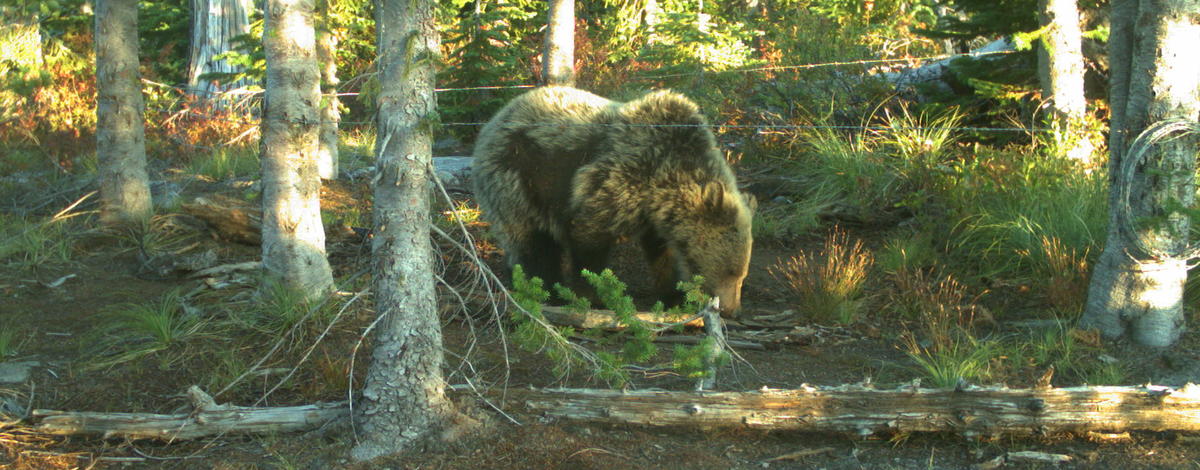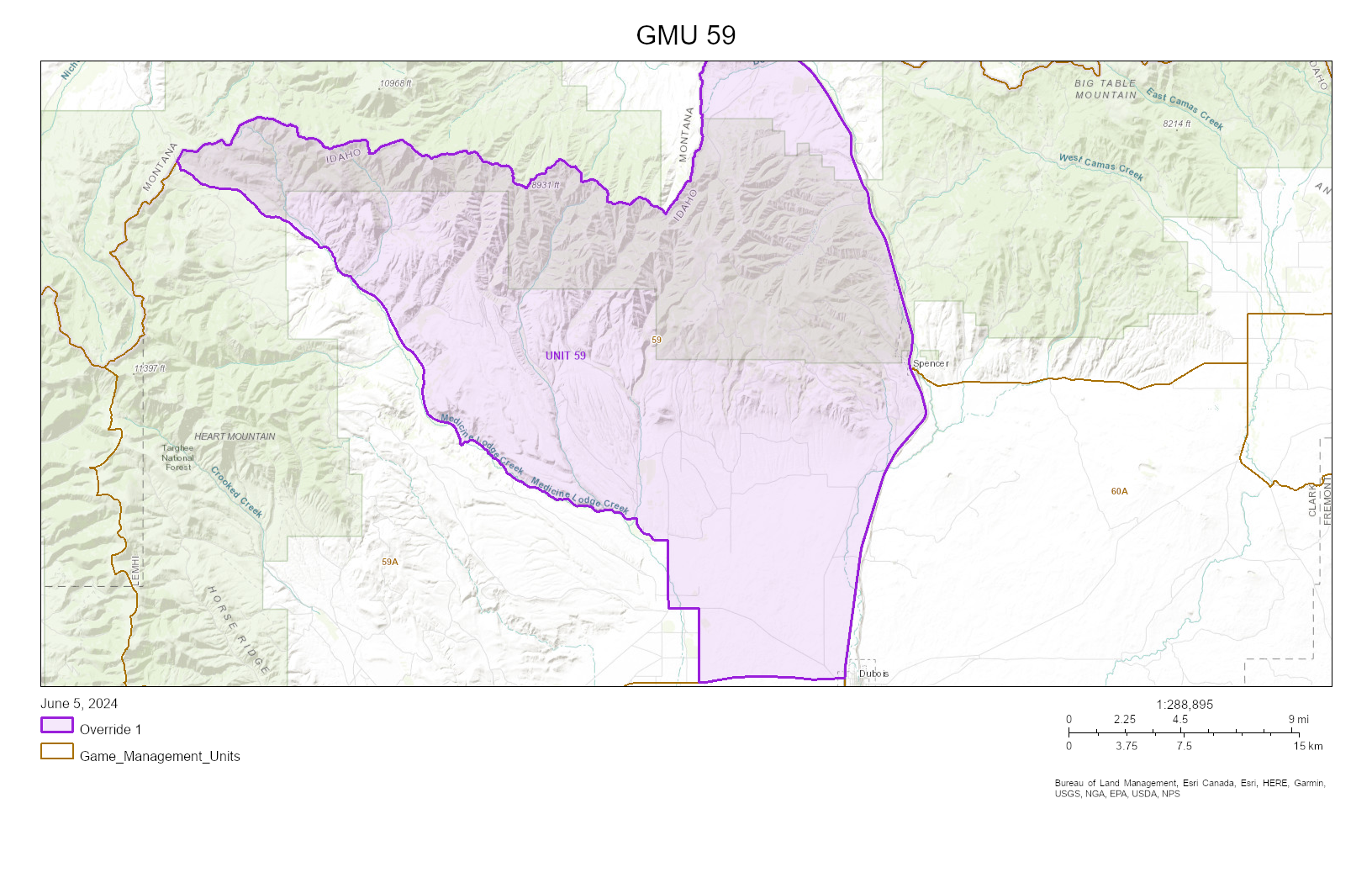Trail camera footage provided to Fish and Game staff confirms the presence of a grizzly bear west of Interstate 15 in Hunting Unit 59. The bear was photographed by a trail camera on May 31, and was clearly identified as a grizzly bear. The presence of grizzlies in Unit 59 has not previously been confirmed. It is not known if the bear is still in the area, but hunters and other forest users should assume that it is and follow ‘Bear Aware’ principles like: be aware of your surroundings, carry bear spray, clean camping, and proper storage of attractants.
As grizzly bear populations expand in both number and range, bears are venturing into new areas to find food, mates, and other resources. Hunters and recreationists alike should be aware of the potential for grizzlies to be present in areas where they have not previously been observed. Black bear hunters in particular should be attuned to the fact that grizzlies may be present in their hunting unit, highlighting the need to properly identify their target.
Grizzly bears are commonly found in much of Idaho’s Upper Snake Region in the Greater Yellowstone Ecosystem and people should expect to encounter them in Units 60, 61, 62, 62A, 64, 65, and 67. In the Panhandle Region grizzly bears are most commonly observed in the Cabinet and Selkirk mountain ranges in Unit 1. However, they have also been infrequently observed in Units 2, 3, 4, 4A, 6, 7, and 9. Black bears are common across the entire state.
With spring and summer activities in full swing across most of the state, now is the prefect time to review and abide by some basic bear awareness reminders – both while recreating in the woods and while living in close proximity to bears. Read on for some helpful tips on both fronts.
Tips for safely recreating in bear country
- Carry bear spray and keep it accessible and within reach.
- Hunt with partners and make each other aware of plans.
- Look for grizzly bear sign, including fresh tracks, scats, digs and carcasses or gut piles.
- Be sure of your target before shooting a bear.
- Retrieve game meat as quickly as possible and approach the carcass carefully and loudly.
- Hang meat, food and garbage at least 200 yards from camp, 10 feet off the ground and 4 feet from the vertical support.
- When not hunting, make noise, especially around creeks and thick vegetation. Most attacks occur by inadvertently surprising a bear at close range.
Tips for safely living in bear country
- Strongly constructed electric fences are the most effective deterrent to keep grizzly bears from unwanted areas.
- Dispose of livestock carcasses and afterbirth through sanitation services, inside an electrified boneyard or by distributing away from people, buildings and other livestock.
Vulnerable livestock should be secured within an electric fence when unattended by people or at night. Vulnerable livestock include young, sick or injured livestock, and small livestock such as poultry, goats, sheep, rabbits, llamas and pigs.
- Install electric fences around non-removable attractants, such as birthing grounds, sheep-bedding areas, chicken coops, bee apiaries, compost piles, gardens, fruit trees, berry bushes or corn fields.
- Properly dispose of attractants, including trash and compost.
- Securely store food, garbage, livestock feed, grain, scented products and other attractants in a bear-resistant place, such as hard-sided buildings with four walls, a roof and locking door.
- Keep pet food secured as you do your own. Bears like pet food as much as your pet does.
- Avoid filling bird feeders until wintertime.
- Do not bury or throw garbage into the nearby woods.
- Make sure to clean your grills and keep them in a building, if possible.
With spring bear hunting season well underway, hunters are encouraged to review their bear identification skills to avoid mistaken identity.




